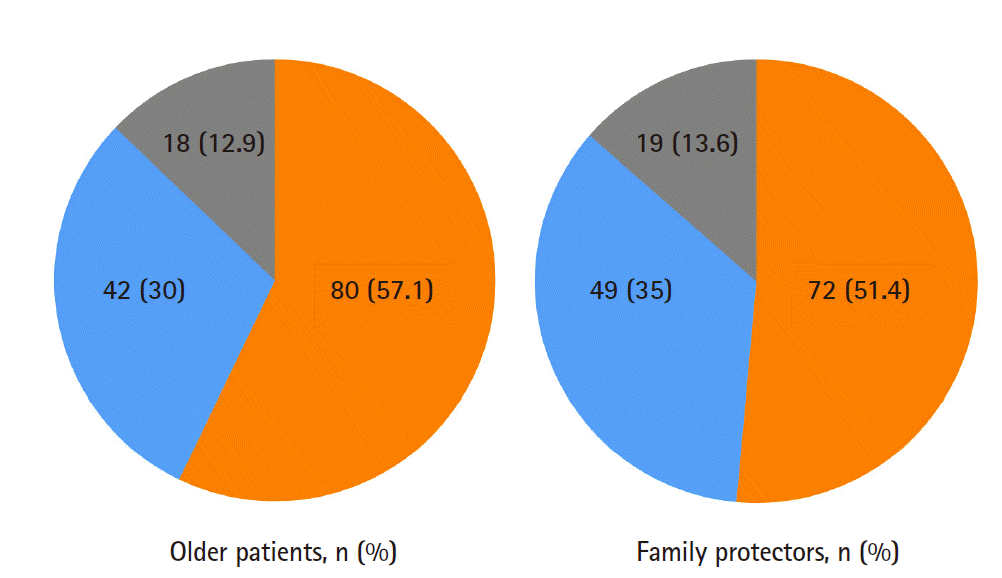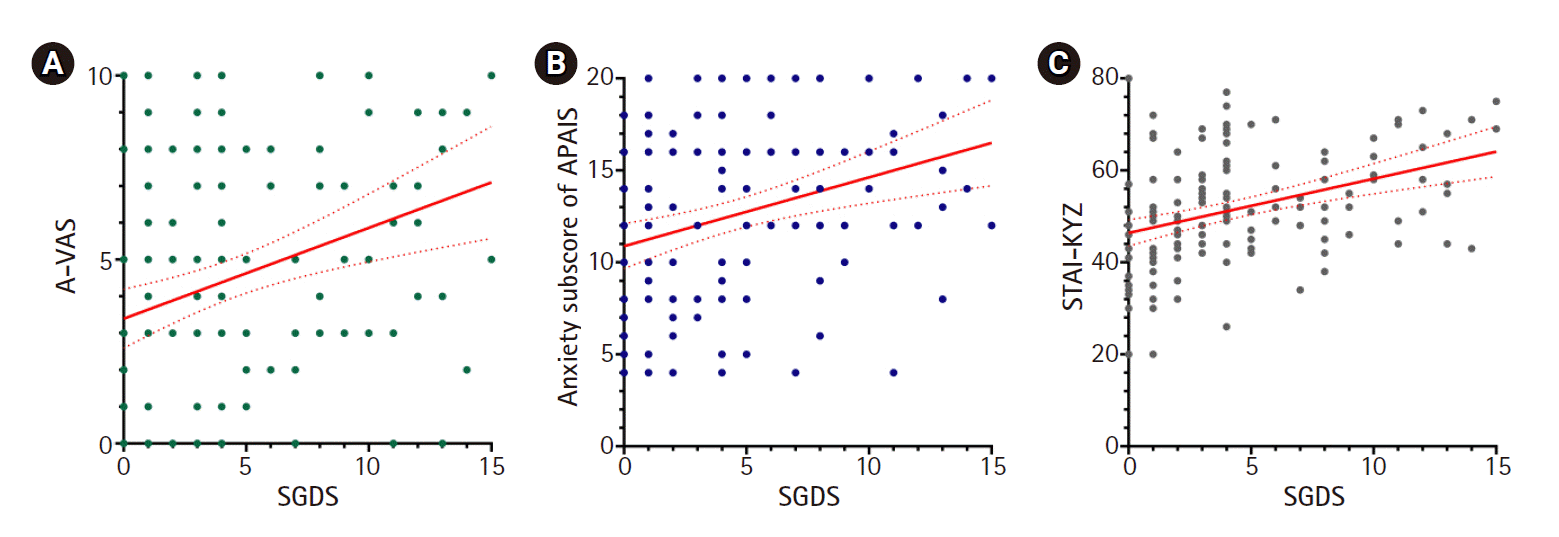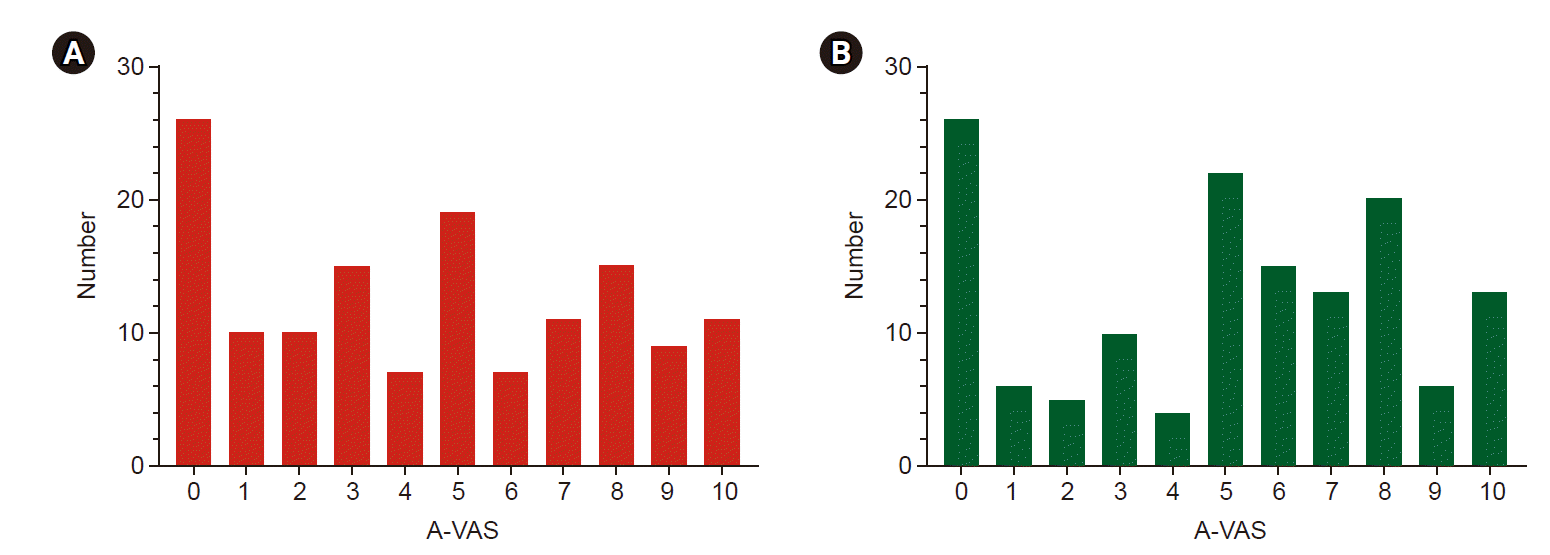1. Johnston M, Carpenter L. Relationship between pre-operative anxiety and post-operative state. Psychol Med. 1980; 10:361–7.
2. Basak F, Hasbahceci M, Guner S, Sisik A, Acar A, Yucel M, et al. Prediction of anxiety and depression in general surgery inpatients: A prospective cohort study of 200 consecutive patients. Int J Surg. 2015; 23(Pt A):18–22.
3. Manyande A, Chayen S, Priyakumar P, Smith CC, Hayes M, Higgins D, et al. Anxiety and endocrine responses to surgery: paradoxical effects of preoperative relaxation training. Psychosom Med. 1992; 54:275–87.
4. Wang Y, Dong Y, Li Y. Perioperative psychological and music interventions in elderly patients undergoing spinal anesthesia: effect on anxiety, heart rate variability, and postoperative pain. Yonsei Med J. 2014; 55:1101–5.
5. Mari G, Costanzi A, Crippa J, Falbo R, Miranda A, Rossi M, et al. Surgical stress reduction in elderly patients undergoing elective colorectal laparoscopic surgery within an ERAS protocol. Chirurgia (Bucur). 2016; 111:476–80.
6. Williams JB, Alexander KP, Morin JF, Langlois Y, Noiseux N, Perrault LP, et al. Preoperative anxiety as a predictor of mortality and major morbidity in patients aged >70 years undergoing cardiac surgery. Am J Cardiol. 2013; 111:137–42.
7. Celik F, Edipoglu IS. Evaluation of preoperative anxiety and fear of anesthesia using APAIS score. Eur J Med Res. 2018; 23:41.
8. Conradsson M, Rosendahl E, Littbrand H, Gustafson Y, Olofsson B, Lövheim H. Usefulness of the Geriatric Depression Scale 15-item version among very old people with and without cognitive impairment. Aging Ment Health. 2013; 17:638–45.
9. Takagi H, Ando T, Umemoto T. Perioperative depression or anxiety and postoperative mortality in cardiac surgery: a systematic review and meta-analysis. Heart Vessels. 2017; 32:1458–68.
10. Ng SK, Chau AW, Leung WK. The effect of pre-operative information in relieving anxiety in oral surgery patients. Community Dent Oral Epidemiol. 2004; 32:227–35.
11. Facco E, Stellini E, Bacci C, Manani G, Pavan C, Cavallin F, et al. Validation of visual analogue scale for anxiety (VAS-A) in preanesthesia evaluation. Minerva Anestesiol. 2013; 79:1389–95.
12. Moerman N, van Dam FS, Muller MJ, Oosting H. The Amsterdam Preoperative Anxiety and Information Scale (APAIS). Anesth Analg. 1996; 82:445–51.
13. Laufenberg-Feldmann R, Kappis B. Assessing preoperative anxiety using a questionnaire and clinical rating: a prospective observational study. Eur J Anaesthesiol. 2013; 30:758–63.
14. Kvaal K, Ulstein I, Nordhus IH, Engedal K. The Spielberger State-Trait Anxiety Inventory (STAI): the state scale in detecting mental disorders in geriatric patients. Int J Geriatr Psychiatry. 2005; 20:629–34.
15. Yesavage JA, Brink TL, Rose TL, Lum O, Huang V, Adey M, et al. Development and validation of a geriatric depression screening scale: a preliminary report. J Psychiatr Res. 1982; 17:37–49.
16. Latif A, Shamsher Khan RM, Nawaz K. Depression and anxiety in patients undergoing elective and emergency surgery: cross-sectional study from Allama Iqbal Memorial Teaching Hospital, Sialkot. J Pak Med Assoc. 2017; 67:884–8.
17. Badner NH, Nielson WR, Munk S, Kwiatkowska C, Gelb AW. Preoperative anxiety: detection and contributing factors. Can J Anaesth. 1990; 37(4 Pt 1):444–7.
18. Hinojosa RJ. Anxiety of elective surgical patients' family members: relationship between anxiety levels, family characteristics. Plast Surg Nurs. 1996; 16:43–5.
19. Bakkane Bendixen A, Engedal K, Selbæk G, Hartberg CB. Anxiety symptoms in older adults with depression are associated with suicidality. Dement Geriatr Cogn Disord. 2018; 45:180–9.
20. Mavridou P, Dimitriou V, Manataki A, Arnaoutoglou E, Papadopoulos G. Patient's anxiety and fear of anesthesia: effect of gender, age, education, and previous experience of anesthesia. A survey of 400 patients. J Anesth. 2013; 27:104–8.
21. Weinstock LS. Gender differences in the presentation and management of social anxiety disorder. J Clin Psychiatry. 1999; 60 Suppl 9:9–13.
22. Caumo W, Schmidt AP, Schneider CN, Bergmann J, Iwamoto CW, Bandeira D, et al. Risk factors for preoperative anxiety in adults. Acta Anaesthesiol Scand. 2001; 45:298–307.
23. Domar AD, Everett LL, Keller MG. Preoperative anxiety: is it a predictable entity? Anesth Analg. 1989; 69:763–7.
24. McCleane GJ, Cooper R. The nature of pre-operative anxiety. Anaesthesia. 1990; 45:153–5.






 PDF
PDF Citation
Citation Print
Print




 XML Download
XML Download